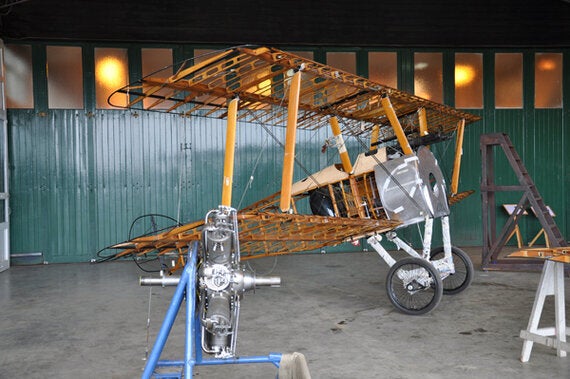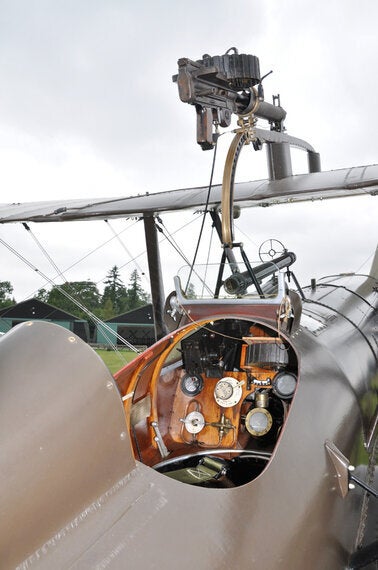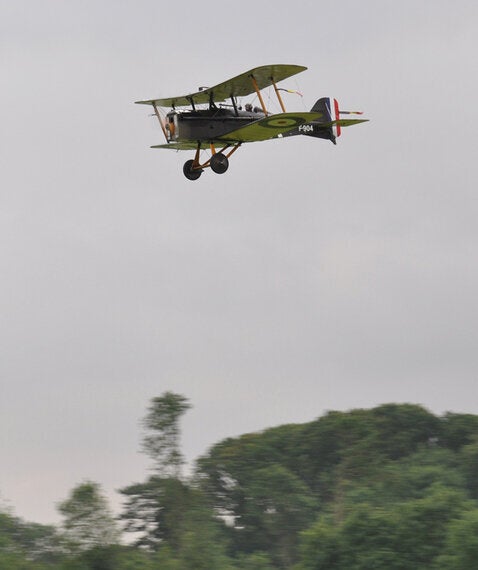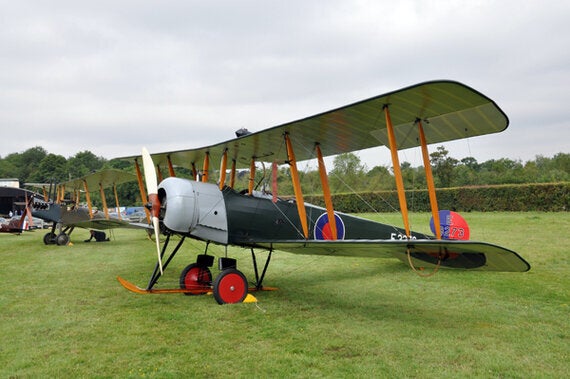Among the lesser reported aspects of the war on the western front during World War I is the role played by aircraft. Britain manufactured 55,000 planes during the war of which only 10 remain in airworthy condition.
Four of these belong to the Shuttleworth Collection in Bedfordshire and have been restored to their original construction. The organisation has been showing them off as part of the WW1 centenary commemoration.

Among them is perhaps the best known of that era, the Sopwith Camel (above). It's currently under restoration, not an easy task. Its frame is built of high-grade spruce, the best wood in terms of strength/weight ratio. It is flawless with long straight grain and the aeroplane resembles a beautiful antique. The wood, once plentiful, is now rare at this quality.
According to Shuttleworth's chief engineer, John Munn, " At the beginning of the last century, you had great forests of spruce that you don't have today. Later, the top-grade quality was mostly used for making pianos. As a result, today it's expensive."
The Sopwith Camel is a fighter aircraft but these did not exist at the outbreak of war. The 65 planes used by the Royal Flying Corps in 1914 were all for reconnaissance purposes once the fighting became bogged down in trench warfare. As Roger "Dodger" Bailey, Shuttleworth's chief pilot explains, "They would plot enemy lines, gun positions and troop concentrations, and to correct the aim of their own artillery fire."
When the Germans developed air defences, such planes were shot down in droves. In particular, the Germans invented in their own Fokker planes a system of gear synchronisation that enabled bullets to be fired through a rotating propellor.

The British would then develop counter weapons such as the Lewis and Vickers guns mounted in the cockpit in fighters such as the SE5 (above). The Germans would counter these, and each side would leapfrog each other with technology. By April 1918, the Royal Air Force was born and its development of fighters, bombers, maritime patrol aeroplanes and so on remains the basis of the air arm today.
The attrition rate was initially high. Flying was in its intimacy. To become a pilot all you needed was five hours flying time and the test required flying a couple of figure eights and landing within 50 yards of the examiner. Pilots were mainly young men from public schools since the nearest equivalent to flying was thought to be riding a horse.
Consequently, more aircraft were lost through accidents than through combat, chiefly on landing and take-off. What's more, the early aircraft were susceptible to poor weather conditions. If a general needed intelligence during a battle, he might order an aircraft to scout for him not understanding the weather parameters within which they could operate safely.

To prove that the aircraft at Shuttleworth are airworthy, Roger Bailey took to the air in an SE5A fighter aircraft (above). It's an original biplane designed by the Royal Aircraft Factory in Farnborough, with its engine built by Wolseley Motors Ltd.
It was recently discovered that this particular aircraft, serial number F904, saw action in France. Flown by Major Charles Pickthorn, it downed a Fokker DVII to the east of Chimay on November 10 1918, the day before the armistice was signed. it was Pickthorn's fifth scalp of the war.
"It's a strong aircraft that could dive at speeds up to 200 mph," says Roger Bailey. "The pilot could fire two guns, one above the propellor, the other one through it."
Needless to say, the guns were not in service, but the Wolseley Viper engine retains that throaty roar so redolent of later war films.

The Shuttleworth Collection houses not only World War I vintage aircraft as above, but aircraft, both military and civilian, up to the 1950s. It is situated at Old Warden Park in Bedfordshire and is open to the public all year round. The images here are my own.